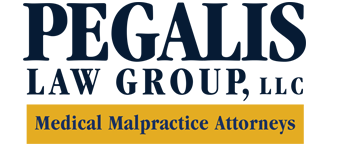-
Understanding Lawsuit Time Limits

If you have been harmed by substandard care that was provided to you by a medical professional, you may be wondering how long you have to file a lawsuit. The statute of limitations for medical malpractice cases differs from state to state. In the state of New York, generally, a medical malpractice claim must be filed within two and a half years from the time that the negligent action took place. However, there are many variables as to what the actual time limit is based on the types of health care providers. It is often confusing for the layperson. To be safe, speak with an experienced medical malpractice attorney as soon as you suspect medical negligence may have occurred.
If you are concerned about a misdiagnosis or possible medical error, contact the law firm of Pegalis & Erickson LLC in New York. For 46 years, we have advocated for people of all ages, in order to help our clients financially and make healthcare safer for everyone. You can reach us today by calling (516) 684-2900.
Attorney Advertising
-
What Are the Symptoms of Sepsis?
Sepsis is a life-threatening condition that results when the body is trying to fight off an infection, causing injury to its own tissue and organs. If a medical professional who is providing care for you has failed to identify sepsis, it may be considered medical malpractice. It’s important to know what the warning signs of sepsis are so that you can seek treatment right away if you experience them. The symptoms of sepsis include sudden fever or low body temperature, breathing much more quickly than usual, a rapid heartbeat, feeling severely confused or disoriented, and finding yourself short of breath. If you have more than one of these symptoms, treat it as a medical emergency.
 If you are concerned about a misdiagnosis or possible medical error, contact the law firm of Pegalis & Erickson, LLC, in New York. For 45 years, we have advocated for people of all ages, in order to help our clients financially and make healthcare safer for everyone. You can reach us today by calling (516) 684-2900.
If you are concerned about a misdiagnosis or possible medical error, contact the law firm of Pegalis & Erickson, LLC, in New York. For 45 years, we have advocated for people of all ages, in order to help our clients financially and make healthcare safer for everyone. You can reach us today by calling (516) 684-2900.Attorney Advertising
-
How Long Do You Have to File a Medical Malpractice Lawsuit?
If you are considering filing a medical malpractice suit, one of the first things you’ll need to know is how long you have to do it. The time for bringing a lawsuit is called the statute of limitations. If the statute of limitations expires, you cannot file a lawsuit. The rules governing when you can file a medical malpractice suit differ from state to state. In New York, there are different time limits to file a lawsuit based upon the entity, whether the injured party is a minor or an adult, and also whether the person is alive or deceased. Time limits in which to bring a lawsuit are often complicated. To ensure that you don’t miss the deadline, talk to an experienced medical malpractice attorney as soon as possible after you suspect that you have been treated negligently.
 If you are concerned about a misdiagnosis or possible medical error, contact the law firm of Pegalis & Erickson, LLC, in New York. For 45 years, we have advocated for people of all ages, in order to help our clients financially and make healthcare safer for everyone. You can reach us today by calling (516) 684-2900.
If you are concerned about a misdiagnosis or possible medical error, contact the law firm of Pegalis & Erickson, LLC, in New York. For 45 years, we have advocated for people of all ages, in order to help our clients financially and make healthcare safer for everyone. You can reach us today by calling (516) 684-2900. Attorney Advertising
-
Recognizing the Signs of Common Surgical Errors
Surgical errors are more common than you might assume. There have been numerous recorded instances when medical professionals misused medical instruments, performed the wrong procedure, or confused one patient with another. While it is the duty of healthcare professionals to take precautions against surgical errors, patients should know how to recognize them. These are some of the warning signs:
 Pain at the Surgical Site
Pain at the Surgical Site
It’s not uncommon to experience some degree of discomfort in the area where your surgery was performed. If you experience prolonged or otherwise unusual pain, however, it may be a sign that an instrument was left behind during your surgery. Be sure to ask about what type of pain you should expect to experience after your procedure, and how long it can be anticipated to last.Extreme Swelling, Redness or Drainage
Some level of swelling, redness, or drainage may be normal after surgery, but it’s important to know how serious you can expect it to become. If you experience severe swelling, redness, or drainage at the surgical site, you should be sure to contact your surgeon right away since this can be a sign of infection. You may want to take pictures to document it.Unexplained Symptoms
If you develop any severe symptoms after surgery, it may be related to a surgical error. For instance, if you come down with a fever, have sharp pain, or experience flu-like symptoms such as vomiting, you should contact your surgeon as soon as possible. Make sure your surgeon has informed you of what the likely side effects of the procedure are, so that you can easily identify any unusual symptoms.If you are concerned about a misdiagnosis or possible medical error, contact the law firm of Pegalis & Erickson, LLC, in New York. For 45 years, we have advocated for people of all ages, in order to help our clients financially and make healthcare safer for everyone. You can reach us today by calling (516) 684-2900.
-
What Is Medical Malpractice?
If you’re considering bringing a medical malpractice suit, it’s important that you understand what the term means. Medical malpractice is defined as having happened when a healthcare provider causes harm to a patient through the provider’s own negligence. In order for medical malpractice to have taken place, three things must be present: The patient must have suffered demonstrable harm, the provider must have delivered substandard care, and there must be a direct link between the quality of that care and the injury suffered by the patient. Medical malpractice can happen in numerous ways, including unnecessary treatment, failure to diagnose, medication errors, and premature discharge.
 If you are concerned about a misdiagnosis or possible medical error, contact the law firm of Pegalis & Erickson, LLC, in New York. For 45 years, we have advocated for people of all ages, in order to help our clients financially and make healthcare safer for everyone. You can reach us today by calling (516) 684-2900.
If you are concerned about a misdiagnosis or possible medical error, contact the law firm of Pegalis & Erickson, LLC, in New York. For 45 years, we have advocated for people of all ages, in order to help our clients financially and make healthcare safer for everyone. You can reach us today by calling (516) 684-2900. -
What Are the Symptoms of a Stroke?

A stroke should always be treated as a medical emergency, and immediate help should be sought. The sooner treatment is provided for stroke, the more likely it is to be effective at preventing extensive brain damage. That’s why it’s so important to know what the symptoms of stroke are. People who are having a stroke may feel lightheaded, experience sudden fatigue, or have trouble keeping their balance. They may also experience abrupt vision problems, or be struck by a sudden and painful headache. However, the most common signs of stroke are slurred speech, numbness and signs of paralysis in one arm, and drooping in one side of the face. If a person displays any of these three signs, call 911.
If you are concerned about a misdiagnosis or possible medical error, contact the law firm of Pegalis & Erickson, LLC in New York. For 45 years, we have advocated for people of all ages, in order to help our clients financially and make healthcare safer for everyone. You can reach us today by calling (516) 684-2900.
-
National Minority Health Month
Unfortunately, not all Americans can count on receiving the same quality of medical care. April is National Minority Health Month, a time to familiarize oneself with the discrimination that minorities may experience in healthcare.
Findings from the National Healthcare Quality and Disparities Reports highlighted the discrepancy between the levels of care received by underserved groups such as minorities, those in rural areas, and the poor, in comparison to other people: African-American received worse medical care than Caucasians for about 40% of measures. Hispanics received worse care than non-Hispanic Caucasians for approximately 60% of measures, and Asians receive worse care for about 20% of measures. Those in poverty received worse care that high-income individuals for approximately 80% of measures.
 Further, according to recent research about minorities and medical care, many feel brushed off or condescended to by their healthcare providers. The results can be delayed diagnoses, worse prognoses, and evens death. If you belong to an underserved population group, it is all the more critical that you keep careful records of the treatment you receive from healthcare professionals. Take the initiative to ask for tests that are recommended for your age and condition.
Further, according to recent research about minorities and medical care, many feel brushed off or condescended to by their healthcare providers. The results can be delayed diagnoses, worse prognoses, and evens death. If you belong to an underserved population group, it is all the more critical that you keep careful records of the treatment you receive from healthcare professionals. Take the initiative to ask for tests that are recommended for your age and condition. If you are concerned about a diagnosis made later than it should have been, a misdiagnosis, or serious errors in medical treatment, contact the New York law firm Pegalis & Erickson, LLC. We advocate for people of all ages and backgrounds and help our clients successfully resolve their cases for financial support and to make healthcare safer for all. You can reach us today by calling (516) 684-2900.
-
Steps to Take If a Diagnosis Is Inconclusive
When you have a clear-cut diagnosis, your course of action may seem clear. What happens, however, when your diagnosis is inconclusive? Living with an uncertain medical verdict can be extremely stressful, because you may have no way of knowing when you will get a more conclusive diagnosis. A recent study found that as many as 12 million people in the United States get an inconclusive—or faulty—diagnosis annually. Here are some steps to take after you have received an inconclusive diagnosis:
 Be proactive, not passive.
Be proactive, not passive.
Many patients assume that the medical practitioners who see them always know best, and that they are always in safe hands. Unfortunately, this isn’t always the case. By being an active, engaged, and informed patient, you can help to ensure that you get quality care.Seek out a second opinion.
If your first diagnosis was inconclusive, it goes without saying that you should try again. Go to a different doctor for a second consultation. To ensure objectivity, it’s best to avoid telling this doctor what the first diagnosis was, at least until you have received the second opinion.Talk to your primary care physician.
You should always start by seeing your usual doctor, who will have a better sense of your overall health than anyone else will. While your diagnosis may be made by a specialist, it’s still important to keep your primary care physician in the loop.Keep yourself informed.
In today’s world, it’s easier than ever for patients to get educated about their health and get the accurate information they need to make smart choices. Always do your research before going to any medical practitioner so you’ll be better equipped to ask useful questions.If you are concerned about a misdiagnosis or possible medical error, contact the law firm of Pegalis & Erickson, LLC in New York. For 45 years, we have advocated for people of all ages, in order to help our clients financially and make healthcare safer for everyone. You can reach us today by calling (516) 684-2900.
-
Preventing Medication Errors at Home and in the Hospital
 Mistakes happen in every walk of life, but when they come in the form of medication errors, the consequences can be devastating. While many of us depend on our healthcare providers to protect us from medication errors, patients also need to be proactive about protecting themselves. These are some of the steps you can take to reduce the risk of medication errors, both at home and when you’re in a medical facility:
Mistakes happen in every walk of life, but when they come in the form of medication errors, the consequences can be devastating. While many of us depend on our healthcare providers to protect us from medication errors, patients also need to be proactive about protecting themselves. These are some of the steps you can take to reduce the risk of medication errors, both at home and when you’re in a medical facility: Keep a personal medications list.
It’s imperative that you keep a complete list of all medications you are currently taking, and bring it along with you to every medical appointment. Include the name of the medication and your prescribed dosage. You should also include any nutritional supplements or over-the-counter medicines you are taking, any allergies you are aware of, and any other pertinent information.Review your medications with your doctor.
Before you begin taking a new medication, review its prescribed use with your doctor or nurse. Make sure that a trusted loved one also has access to this information. Don’t forget to update your medications list whenever you need to make a change.Check expiration dates routinely.
All medications come with an expiration date, and taking expired medicines can result in subpar treatment or even serious side effects. Check the labels of all the medications you are taking on a regular basis, and dispose of any medications that are past their expiration dates. The FDA recommends that you remove any personal information from containers and seal medicines in plastic bags before throwing them out.Pegalis & Erickson, LLC, has been providing legal assistance to people whose lives have been disrupted by medical malpractice for nearly 45 years. We have won thousands of verdicts and settlements over the years on behalf of our clients. Call our office in Long Island, New York, today at (516) 684-2900 to schedule a free initial consultation.
-
FAQs About Documenting Medical Malpractice
As a patient, you may be wondering if there is anything you can do to help ensure that your diagnoses are accurate. In fact, there are several steps you can take to fully document the treatment you are receiving and ensure that you have information that you can refer back to later. Here are the answers to some questions you might have:
 How many of my medical records should I keep? The simplest answer is “All of them.” If you are being treated for an ongoing health issue, you should keep any and all documents you receive from any medical professionals who treat you, along with other records of your interaction such as receipts. It’s generally advised that you hold on to medical records for at least 10 years.
How many of my medical records should I keep? The simplest answer is “All of them.” If you are being treated for an ongoing health issue, you should keep any and all documents you receive from any medical professionals who treat you, along with other records of your interaction such as receipts. It’s generally advised that you hold on to medical records for at least 10 years. How can I keep track of my treatment? One of the best ways to ensure that you have a comprehensive record of the state of your health as well as your medical treatment is to keep a health journal. In the journal, make a note of every appointment you have and write down as much as you can remember after each visit, particularly any instructions you get from your practitioner and any information about possible outcomes.
How can I tell if my diagnosis is correct? There are a number of strategies you can adopt in order to increase the likelihood of an accurate diagnosis. Bring a friend or a loved one with you during your appointment for support and to remind you of any questions you want to ask. If the practitioner who diagnoses you seems vague or unclear, get a second opinion. Having a clear record of your treatment and symptom history can also be useful to refresh your memory when you’re talking with your healthcare provider.
Are you in need of a medical malpractice attorney in Long Island, New York? Pegalis & Erickson, LLC is committed to providing patients and their families with the capable legal services they deserve. If you believe that you or a loved one has been affected by medical malpractice, please contact us today at (516) 684-2900 for a free consultation.
Recent Posts
Popular Posts
categories
- Uncategorized
- Infographic
- Patient Safety
- Patient Health
- Stillbirth
- Birth Injuries
- Medical Malpractice
- Medical Negligence
- Event
- Erb's Palsy
- Injury
- ER
- Video
- Cancer Misdiagnosis
- Medication Errors
- Cerebral Palsy
- Medical Negligence Lawyer
- Anesthesia Injuries
- Brachial Plexus
- Prostate Cancer
- About Us
- Men's Health
- Skin Cancer
- Breast Cancer
- Misdiagnosis
